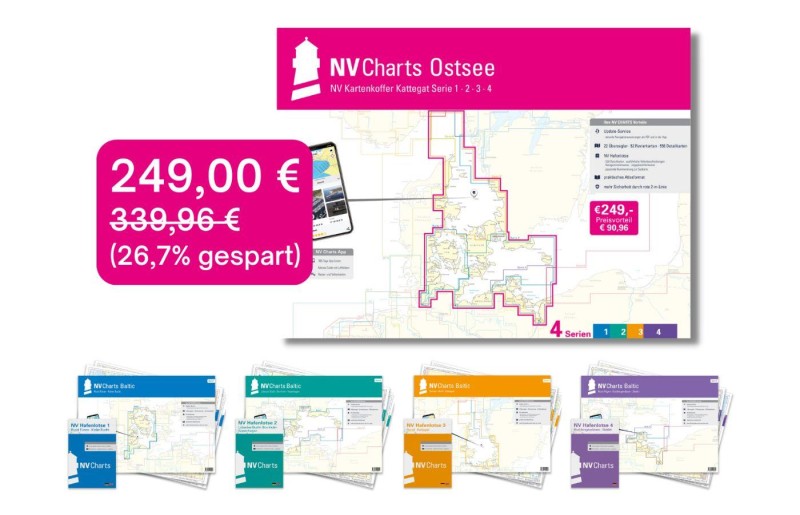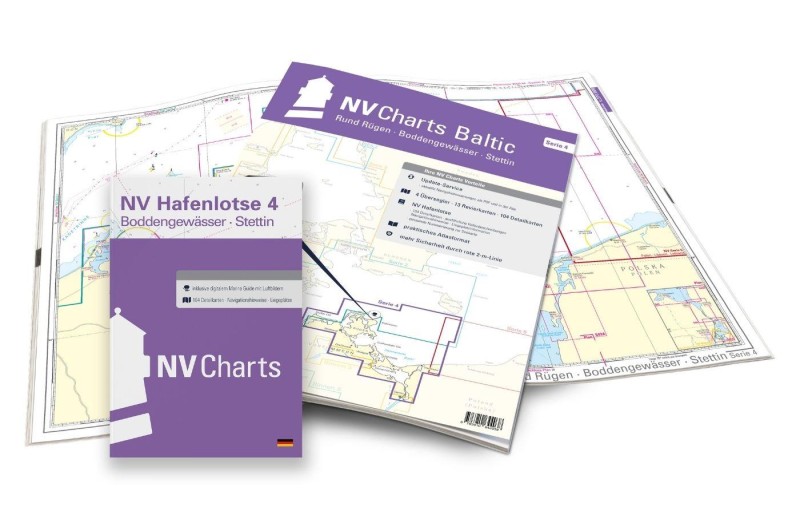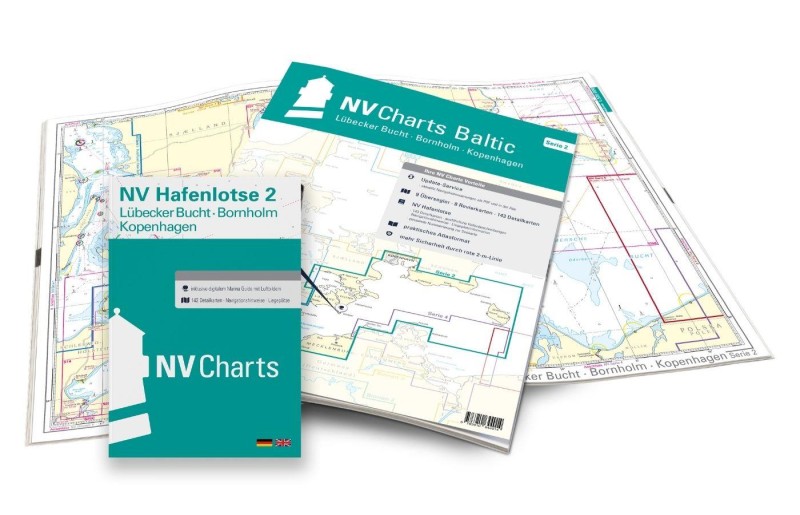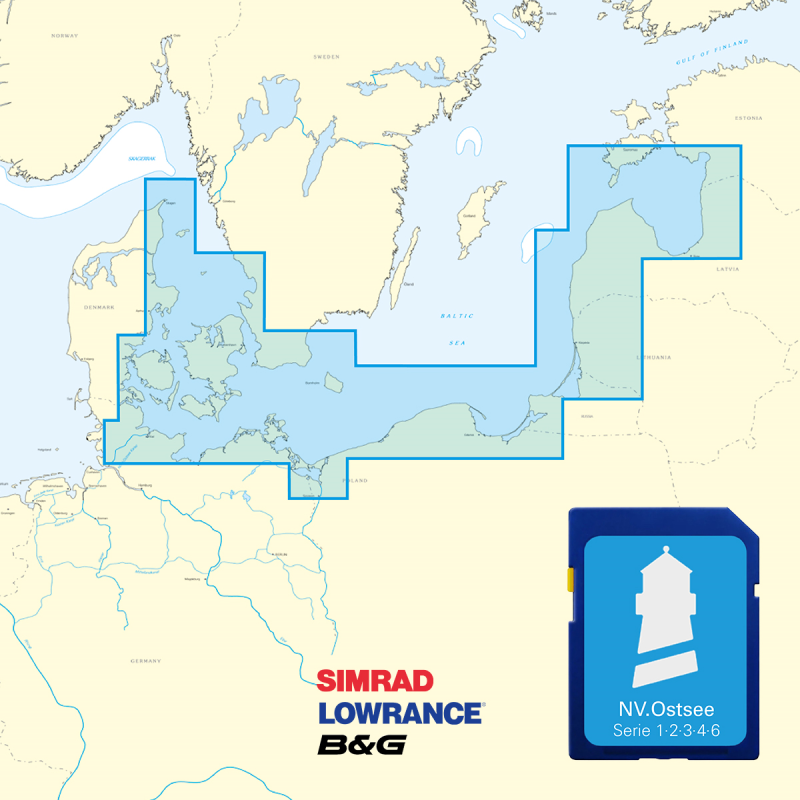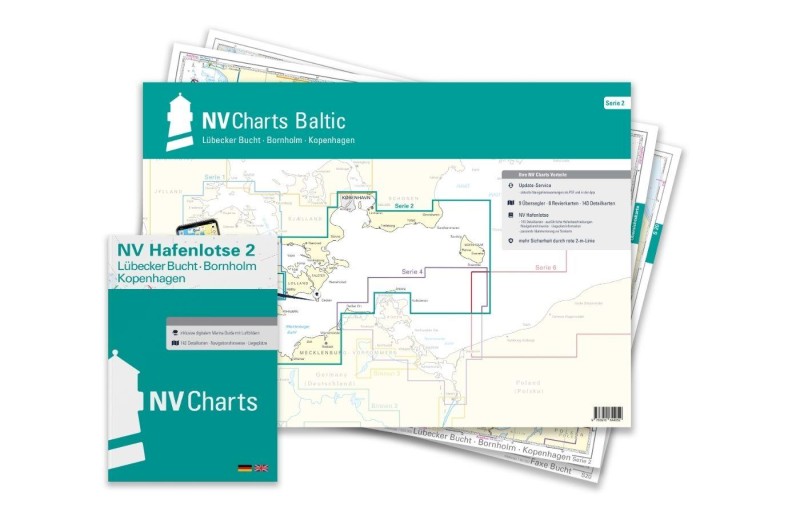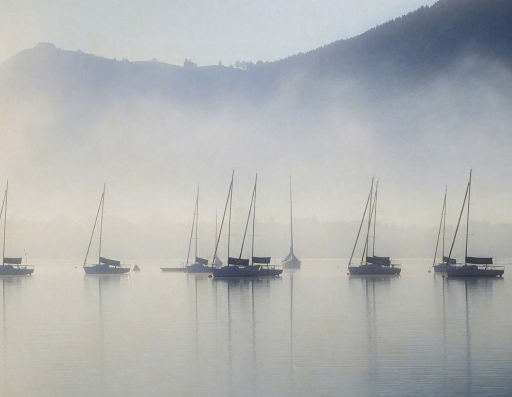Breege
Marina near Breege
Latitude
54° 36’ 43.6” NLongitude
13° 21’ 23.8” EDescription
Expanded plant in the north of the Breeger Bodden.
NV Cruising Guide
Navigation
The approach is only recommended for those unfamiliar with the area during the day. From the main fairway, turn north between buoy JB 38 and JB 40/Br1 and then steer in the buoyed side fairway to the harbour. To keep clear of the dangerous Saal stones in front of the harbour - east of the buoy line - keep exactly in the fairway.
The area around the jetty is privately buoyed.
Berths
The northwest pier and marina offer guest berths at 2.5 - 3m water depth. The pier located on the west side is used exclusively for local fishing boats. The marina is usually overcrowded during boat changes at the local charter company. When the wind blows from south to southwest, there is a swell in the harbour.
Surroundings
Electricity and water are available at all berths. A slipway, a kiosk for small on-board needs and bread sales, a fish shop and restaurants can be found at the harbour.
NV Land Guide
The excursion possibilities make Breege one of the most attractive moorings on Rügen. For a visit to the wooded Schaabe with its fine sandy beaches, the old village of Altenkirchen, the old fishing village of Vitt, which is completely listed, and of course Cape Arkona with the ramparts of the Slavic Jaromarsburg, you are in exactly the right place here with your yacht. The harbour is also an ideal stopover on the way to the Störtebeker Festival in Ralswiek.
In the 7th century, the Ranen, known as a brave and enterprising tribe of Slavs (see also Ralswiek), built the temple castle, which they considered impregnable. To the north, east and south the steep chalk cliffs protected against enemy attacks, to the west a wall system and palisades. A spring at the northern end of the castle provided the water supply. In the middle of the open space inside the castle stood a wooden temple with a crimson dome. Precious carpets formed a second interior space in the temple, where the temple shrine stood: the idol of the bearded, four-headed Swantewit, about three meters high. The emblems of his divine dignity, such as saddlery, sword, and gold ornaments, were laid aside for the god. Once a year the horn he held in his right hand was filled with mead, so that he could then interpret the future from the state of the wine - above all predict the coming harvest yields. With offerings, animal and also human sacrifices, the god was propitiated.
At the lavish feasts following the rites at harvest time, a proper intoxication spoke for strength of faith. Generous portions of the spoils and profits from business were given to the deity. It was considered a special honor to be a war servant on one of the deity's three hundred steeds. But only the chief priest was allowed to attend to and ride the white horse of Swantewit.
A number of the excavation finds still come from the eastern ruins of the temple fort. It has slid into the sea piece by piece over the past few centuries, along with parts of the castle wall. Wind and waves continue to wear away more and more of the cliff and the castle rampart, which was once of central importance to the Rans.
Only a few soldiers and priests inhabited the refuge castle. When enemy raids threatened, the farmers, fishermen and merchants retreated here and defended the fortress. They succeeded in doing so after losing battles in 1159 and 1166, but when the Danes approached a third time in 1168 with a strong force, the days of the Rugian Empire were numbered.
Saxo Grammaticus, famous for his lore, took part in the Danish campaign, writing down the events during the battle and not forgetting to glorify his brother as a hero. On June 14, 1168, the Danes were not yet thinking about storming the castle, but were first busy with the siege and thinking about how best to conquer the castle. At first they had brought the narrow strait of Wittow (east of Breege) under their control, so that nobody could stab them in the back, and they prepared themselves for a longer stay. But quite unexpectedly, a Dane had succeeded in setting fire to the gate and the tower above it during a little preliminary skirmish. The attention of the defenders was now mainly focused on extinguishing the fire, an opportunity that the Viking king Waldemar did not miss. Only when the debris collapsing in the fire buried many of the Slavs did the Rans ask for surrender negotiations. In this they obtained that their villages escaped the usual depredations, but they had to convert to Christianity, wherein the Danes saw their greatest victory against the heathen. Nevertheless, the fear of their idol was so great that they refused to destroy it. So the Danes dragged the wooden Swantevite themselves, crushed and burned it. Only when they saw that their God let this happen without punishment, the will of resistance of the Ranen finally broke and the capitulation spread to all Slavs of the island of Rügen. Today you can walk along narrow paths on the ramparts.
The silhouette of the cape is marked by two lighthouses, the new round one and the old one, whose history is recorded on two boards on the way from Puttgarten to the cape. It reads: "Since December 2, 1902, the new lighthouse, built in about a year, has been in operation without interruption. The round tower is 35 metres high and rests on an octagonal granite base. The lantern at the top of the tower is covered by an iron dome. Since 1996, the lighting equipment has consisted of two special incandescent lamps of 1000 watts each, whose light is still visible at a distance of 22 nm through spotlight lenses (so-called Fresnel lenses) arranged in front of them. The entire apparatus is moved to produce the flash fire by a rotary mechanism mounted on mercury. This flashing beacon repeats every 17.1 seconds the orientation light internationally established for Arkona, which consists of a flash group of three flashes. Outside the lantern there are bird protection lamps, so that the birds, which are blinded by the beacon especially during the bird migration in spring and autumn, can orientate themselves better and do not crash against the tower. In the tower itself, 175 steps lead up to the lantern room. The total height of the beacon is 75 m above sea level. In accordance with the agreements of the International Conference on the Law of the Sea, the tower has been wearing black and red stripes since 1980. The entire technical installation is the only example of its kind still existing on the Baltic coast..."
On the older tower, the plaques read: When in 1816 the island of Rügen was handed over from Sweden to Prussia, the Stralsund merchants proposed to the Stralsund government the erection of beacons at various points on the Baltic coast. In order to increase the safety of ships passing Cape Arkona due to the dangerous shoals there, the oldest lighthouse on the Baltic coast of Mecklenburg-Vorpommern was built in 1826 and 1827 according to a design by Karl Friedrich Schinkel and put into operation on December 10, 1827 (a wooden fire beacon used to orient ships with its coal fire during the day and at night used to stand at this location). The beacon on the 19.3 metre high tower was a fixed beacon of 17 beet oil lamps, which were mounted in two levels. The light reached about 8 nm (1 nautical mile 1852 m) by the parabolic searchlights used. The technical equipment, which no longer exists today, illuminated the water horizon at an angle of 270 degrees. The rooms in the three-storey tower served as service and storage rooms. The lamp oil was stored in the cellar. Next to the lighthouse stood the storm warning station, the rescue station, and the fog signaling equipment. After 75 years of uninterrupted operation, the old beacon was decommissioned with the commissioning of the new lighthouse. Today it is under monument protection".
The strenuous everyday life of the lighthouse keeper can hardly be measured today. Even at the end of the 19th century, lighthouse keeper Eduard Schilling also entertained guests at the lodging house at the cape. Tower rooms served as accommodation. In addition, six acres of land had to be worked. At that time, a total of four families lived on Arkona, which was not infrequently exposed to adverse weather conditions. With the introduction of telegraphy, the lighthouse keeper also had to take on the duties of a telegraph office superintendent. For water level measurements he had to descend the iron stairs to the gauge on the shore every time. He had to recognize the migratory birds and estimate their numbers. When Arkona was included in the so-called chronometer expedition on the Baltic Sea, with the help of which the geographical longitudes of places were determined, mathematicians travelled from Berlin, who described the weather even in summer as "terribly cold, stormy and rainy". Today, the lighthouse keeper is only responsible for controlling the beacon, which has been automatically controlled for years.
Ships stranding on the stones off Cape Arkona continued to be experienced by the lighthouse keepers despite the fires. Eye-rollingly, a tale is told of a stranding around 1890 in broad daylight on a Sunday morning. The watchman of the sea rescue team specially fetched the men from the church after a schooner had abruptly set the distress signal.
Arrived at the ship, the "rescuers" were presented with an unexpected picture: those in "distress at sea" celebrated with brandy that they had so skilfully set their old pot on the reef. To the watchman of the rescue team the old captain said: "Get your mouth. You know, it's foggy out here." Thereupon the rescue crew joined in the celebration and drank a toast in bright sunshine to the pot-thick fog that had prevailed in any case for the ship's insurance. The revelers were said to have actually felt "fogged in" afterwards and testified to having been caught in the middle of one of those sudden "local fogs."
No sooner have you entered the village of Puttgarten, a kilometer west of the cape, than you are almost out again. Two things catch your eye: the fire station with its fancy Gothic gable and the fact that they're geared up for tourism to the cape.
A good kilometre south of the castle ramparts and lighthouses, the fishing village of Vitt with its thatched houses hides idyllically in a hollow between the steep slopes. Due to its uniqueness, it has been completely listed according to a UNESCO decision. There is probably no place on Rügen where you can imagine the hard, deprived life of fishermen in past centuries so well. As a film location for a movie before the turn of the century, the scenery would have some blemishes, but they are in the details. On the whole, not much has changed here in 100 years. Even the cozy inn looks pristine. The age of Vitt is in the dark, but it is thought that huts were here when the Danes stormed Temple Castle.
There have been four other coastal fishing villages, also called fishing camps, along the northern shore of Wittow. Vitt was never a large settlement. Nature dictated the village boundaries by the steep slopes. Thus it is known that in 1694 16 fishing families lived here, including a pitcher, a linen weaver and a tailor.
Witzlaw III granted the Vittern the "right to the freedom of fishing" as early as 1290. For this they paid him demurrage and mattherings (see also Gager). Every year from August to October a big herring market took place in Vitte, which attracted merchants from the whole Baltic Sea area. Despite the income from this market, the fishermen from Vitte had to earn their living from the large farmers in the surrounding area during the summer. They owned no more than two cows and some small livestock. Thick sheets of ice in severe winters increased their hardship, because they lived almost exclusively from fishing. It was not only in the particularly hard winter of 1888 that they had to starve.
Also worth seeing is the small chapel of the old fishing settlement, which the well-known poet and pastor Kosegarten had built on the hill above the fishing camp in 1806. He called it "Uferbethaus". The little church impresses with its simple interior and round shape.
The pastor learned during one of his sermons that the fishermen were more interested in the herring than in beautiful words after all. The "Utkieker" standing on the cliff had noticed the arriving shoals of herring. After his call "de Hering kümmt" the cozy devotion was over. "Vol Büdel" the man of God wished the fishermen rushing away.
Ludwig Gotthart Kosegarten not only made a name for himself with his fishing sermons. As a poet, he also influenced the development of Ernst Moritz Arndt (see Puddemin), who was often his guest.
We only recommend taking the bus via Altenkirchen on the way there to Cape Arkona; on the way back, the hiking route on the Hochuferweg is definitely recommended. There are eight kilometres to walk back to the harbour, but it's worth it. After about three kilometres on the cliff path, you pass a Neolithic megalithic tomb near Nobbin, a long and flat mound framed with large boulders.
The special sight of Altenkirchen (2 km northwest of Breege), which is 800 years old, is the village church. In 1200 it was first built in Romanesque style and later received Gothic elements. It bears witness to how hasty the Danes were in Christianising the Rugians after conquering the Slavic castle. A gravestone in the eastern wall of the vestibule shows that they also made concessions to the old beliefs of the Rans. The figure, which is only recognizable in outline, probably represents the Rane deity Swantevit. Gothic sculptors created the church's late Romanesque baptismal font around 1240.
Not only does a hiking trail extend northeast from Breege to the cape; a beautiful, seven-kilometre-long shore path also runs southeast along the entire eastern shore of the Schaabe. The narrow strip of land between the Baltic Sea and the Lebbiner Bodden is particularly well known for its fine sandy beaches and sparse pine forests. From Breege, you can walk to the village of Juliusruh and then reach the perfect beach of Tromper Wiek after about 1.5 km.
Breege itself is a long village, formerly dominated by fishing, now mainly by tourism. Fishing is now only a modest source of income. Fresh fish can be bought at the harbour during the herring season and in the village a net place and storage sheds bear witness to the importance of the traditional trade.
The harbour is a popular port of call for passenger ships as well as a well-known charter base and is also home to a DGzRS station with the SRB "Manfred Hessdörfer" (call sign: DBBL).
Marina Information
Contact
| Phone | +49 38391 579 |
| Please enable Javascript to read | |
| Website | https://www.breege-juliusruh.m-vp.de/hafen-breege/ |
Surroundings
Electricity
Water
Toilet
Shower
Fuel
Grocery
Ramp
Public Transport
Bikerental
Garbage
Sewage
Comments
You can add comments with the NV Charts App (Windows - iOS - Android - Mac OSX).
You can download the current version at nvcharts.com/app.
Buy nv charts covering this place Clicking one of the products will open the nv charts shop.
Places nearby
Related Regions
This location is included in the following regions of the BoatView harbour guide:


